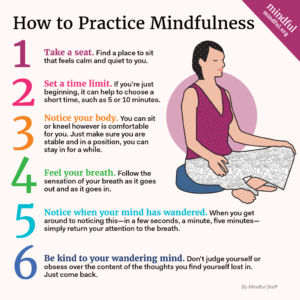Have a Mindful Christmas
At any point in one’s life, Christmas can be difficult. How can you have a Merry Christmas with Mindfulness.
For the first time, you may be having trouble this year. Alternatively, you may have had a challenging time with Christmas in the past and are dreading it this year.
You might like Christmas as well, but you will not be able to celebrate it the way you want. Alternatively, you may enjoy some aspects while finding others stressful.
Christmas can feel tough for a variety of reasons, maybe (like me) your children are grown up and spending the time with their own family for the first time. Or:
The people you hold dear are no longer around.
Perhaps you feel lonely.
There are people you want to avoid
You are worried about money
Ways you can cope
Mindfulness can be the perfect energizer to get you through the Christmas season without feeling overwhelmed. It is not only a powerful coping mechanism, allowing us to take a step back and feel less pushed around by our thoughts and feelings, but it also serves as the foundation for self-care.
Mindfulness allows us to check in, observe our needs, and take beneficial action – getting a good night’s sleep when we are tired, a reminder to reach out when we are lonely, and to have nutritious food before we become ‘hangry’ from hunger.
What is Mindfulness?
Mindfulness the practise of maintaining a gentle, nurturing awareness of our thoughts, feelings, bodily sensations, and surroundings on a moment-by-moment basis.
Acceptance is another advantage of mindfulness. By paying attention to and not judging our thoughts and feelings. In any given situation, there is no “right” or “wrong” way to think or feel. Instead of thinking of the past or imagining the future, when we practise mindfulness, our minds focus on what we are feeling in the present moment.
Practicing Mindfulness
Meditation is one way to nurture mindfulness, but it is not the only method. It is not about sitting in the lotus position or being uncomfortable. Find a place where you can devote a little time to practice.
Here are key aspects of mindfulness that you can try:

- Keep a close eye on your breathing, especially if you are experiencing strong emotions.
- Observe—really observe—what you are sensing at any given time, the sights, sounds,and smells that ordinarily pass you by unnoticed.
- Recognize that your thoughts and emotions may wonder but try and bring it back to the present moment, they may be brief and do not define you, a realisation that can help you break free from negative thought patterns.
- From the way water hits your skin in the shower to how your body rests in your office chair, pay attention to your body’s physical sensations.
- It is all about bringing your attention back to the present moment over and over. Our brains appear to be wired to get carried away in thought. As a result, mindfulness is defined as the practise of returning to the breath repeatedly. The sensation of breathing serves as a grounding anchor for us in the present moment. Our ability to do it over and over again is strengthened each time we return to the breath.
- Find “micro-moments” of mindfulness throughout the day to help you refocus and rediscover your purpose.
How to Practice Mindfulness

Mindfulness – National Health Service UK






